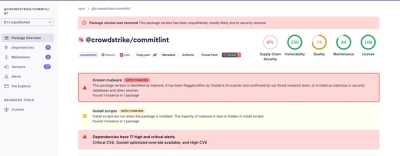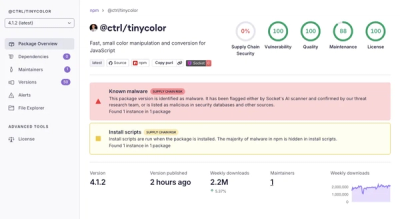Ember-cli-s3-sync 
A customizable tool for deploying your Ember app to Amazon's S3. Customize the deploy by running your own scripts within the process (beforeBuild, afterBuild, beforeDeploy, afterDeploy)
Install
npm install ember-cli-s3-sync --save-dev
ember generate config-s3
Authenticating with S3
This addon uses aws-sdk for communicating with Amazon S3. You can provide authentication credentials in the following ways (listed in order of precedence):
ember deploy:s3 --aws-secret=my-secret --aws-key=my-cool-key- shared credentials file at ~/.aws/credentials file.
- these shell environment variables:
AWS_ACCESS_KEY_ID, AWS_SECRET_ACCESS_KEY
- deploy/config.js
{
...
options: {
accessKeyId: "mycoolkey",
secretAccessKey: "secretsarecool"
}
...
}
note if key & secret aren't found at any of the checks above then you will be prompted for credentials -blocking the deploy (keep this in mind if using with automated/continuous deployment systems).
How to use
ember deploy:s3 --environment=production --aws-key=12345 --aws-secret=asdfasdf --aws-bucket=buckets-o-fun
- this builds a production version of your app and deploys all files in the
/dist directory to the S3 bucket "buckets-o-fun"
ember deploy:s3
- this will build development version of your app and prompt you for
awsKey, awsSecret, and awsBucket
possible cli arguments:
environment (optional. uses app's default. Passed into deploy/config.js)output-path (optional. uses app's default /dist)aws-key (required. will prompt if not found)aws-secret (required. will prompt if not found)aws-bucket (required. will prompt if not provided as cli arg or found in deploy/config.js)aws-region (optional. will be verified and updated if necessary during deploy process)skip-build (optional. will skip the build, deploying whatever is in /dist)prepend-path (optional. will upload assets to the 'subdirectory' path defined here)
notes: camelCase args are okay but they'll be converted to their dasherized version.
Configuring deployment
Generate a config file with ember generate config-s3 (creates a file at your-app/deploy/config.js)
The environment is passed into config file, which returns an object containing deploy configuration options.
And here are the pieces to deploy/config.js:
ember-cli-s3-sync Options
{
...
environment: 'development',
promptCredFile: false,
verbose: false,
...
}
{
...
options: {
region: 'us-east-1',
maxRetries: 3,
sslEnabled: true,
params: {
Bucket: 'my-bucket'
},
...
}
Prompt for additional Options:
If you want the deploy process to prompt a user for additional options to be merged in for instantiating the S3 Object:
Uses the inquirer node module.
{
...
additionalOptions: [
{
type: 'input',
name: 'maxRetries',
'default': 2,
message: 'Please enter a maximum number of retries to attempt when uploading a file',
validate: function(value) {
if ('number' !== typeof value) {
return false;
}
return value;
}
}
]
...
}
notes: when a name (e.g., maxRetries) is in both additionalOptions and the options hash,
then the value defined in the options hash takes precedence and the user will not be prompted.
Deploy Steps:
You can run scripts throughout the deploy process. These scripts must exit their process for the deploy to continue running.
{
...
beforeBuild: [
{
command: 'curl http://my-site.nyc?new_build=start',
includeOptions: ['someOption', 'anotherOption'],
fail: false
}
],
afterBuild: [
...
],
beforeDeploy: [
...
],
afterDeploy: [
...
],
...
}
Example Deploy Steps:
providing default cli-arguments to run with your custom scripts:
Running: ember deploy:s3 --compressed --head=false --header="Pragma: no-cache"
{
...
beforeDeploy: [
{
command: 'curl http://httpbin.com/headers',
includeOptions: [
'compressed',
'beh',
{ header: 'X-Host: mysite.com' },
{ header: 'X-Update: 1' },
{ head: true }
],
fail: false
}
],
...
}
will run the following command, waiting for it to exit before deploying assets to S3 (beforeDeploy hook):
curl http://httpbin.com/headers --compressed --header "X-Host: mysite.com" --header "X-Update: 1" --header "Pragma: no-cache"
explaination:
--compressed
was passed withember deploy:s3 and so it was included
--beh
was not passed with ember deploy:s3 and so it was ignored
--header "X-Host: mysite.com" and --header "X-Update: 1"
were defined as defaults so they were included
--header "Pragma: no-cache"
was passed with ember deploy:s3 and included because there exists a header key in includeOptions Array. It did not overwrite any defaults since there were multiple defaults.
--head
was passed as false with ember deploy:s3 and so it overwrote the default
Example config for deploying YUI docs with ember-cli-yuidoc:
Running: ember deploy:s3 --environment documentation --output-path docs --prepend-path docs --skip-build
var documentationConfig = {
...
params: {
Bucket: 'bucket-o-docs'
},
beforeDeploy: [
{
command: 'ember ember-cli-yuidoc',
includeOptions: [],
fail: true
}
],
...
};
module.exports = function(env) {
return (env === 'documentation') ? documentationConfig : 'development';
};
--environment gets passed into deploy/config.js so that it can determine which config object to return--output-path is the local folder (relative to project dir) where assets are located--prepend-path is a way to specify a 'subdirectory', inside s3 bucket, to upload assets--skip-build says to skip building the actual app (ember build)
notes: beforeBuild and afterBuild are not run if you use --skip-build flag.
Environment variables
If the build/deploy process relies on certain shell environment variables, those can be set explicitely for each deploy environment. e.g.,
{
...
processEnv: {
API_URL: 'http://api.website.com'
}
...
}
See issue 26 for rationale and example use case.
TODO



